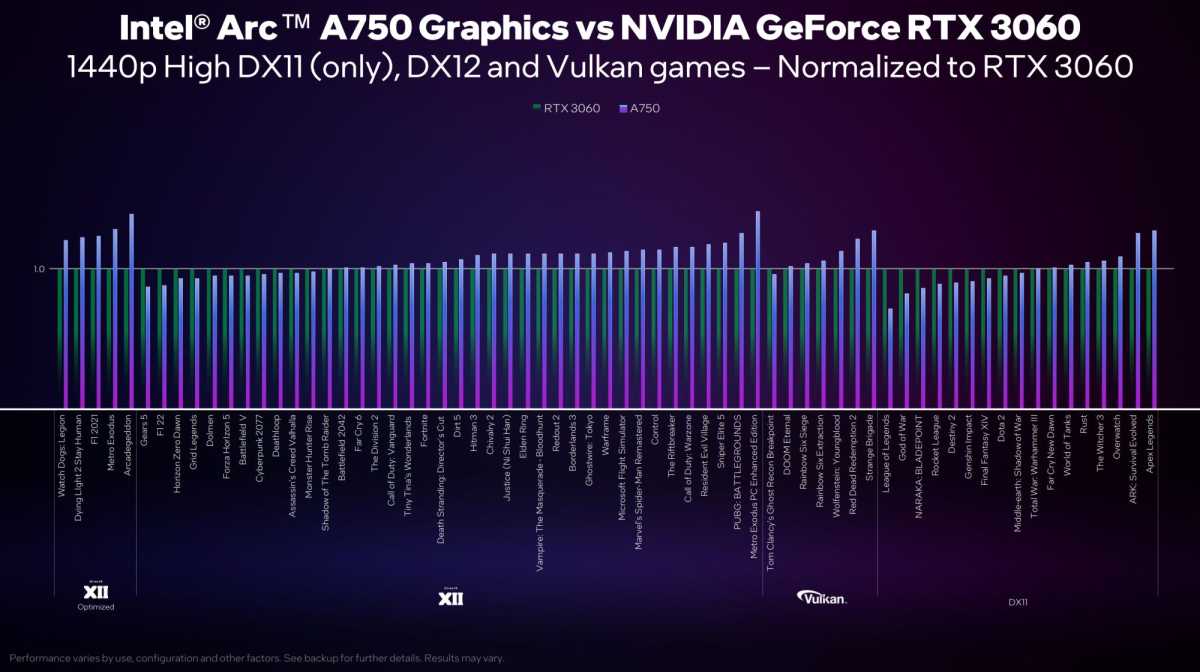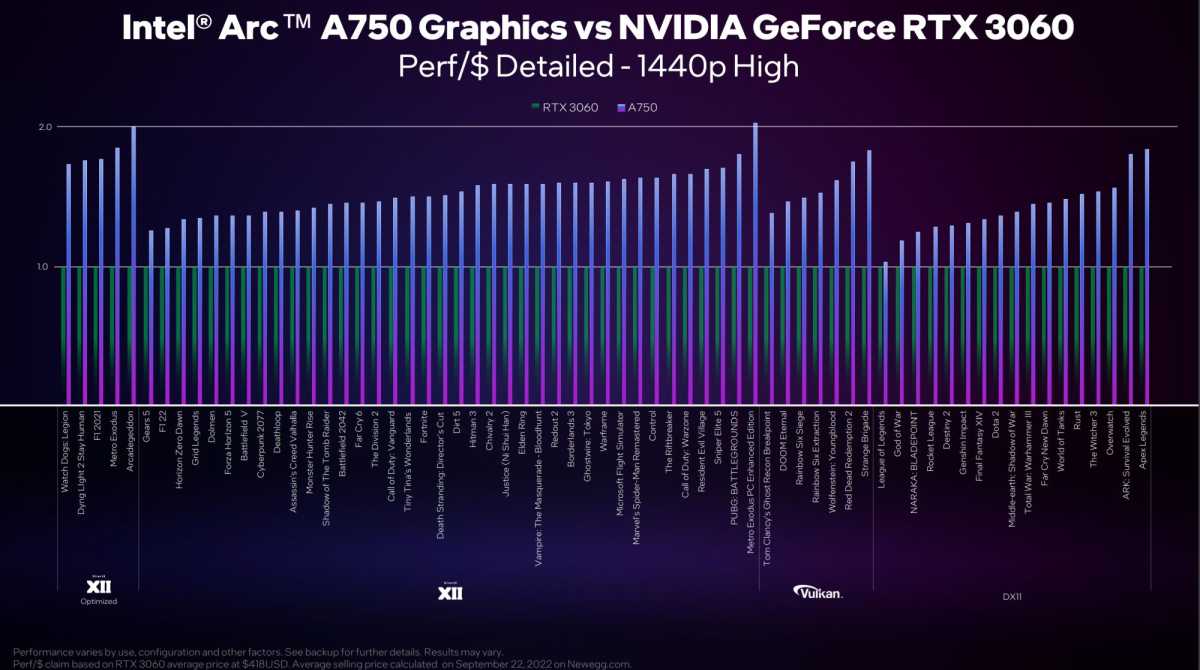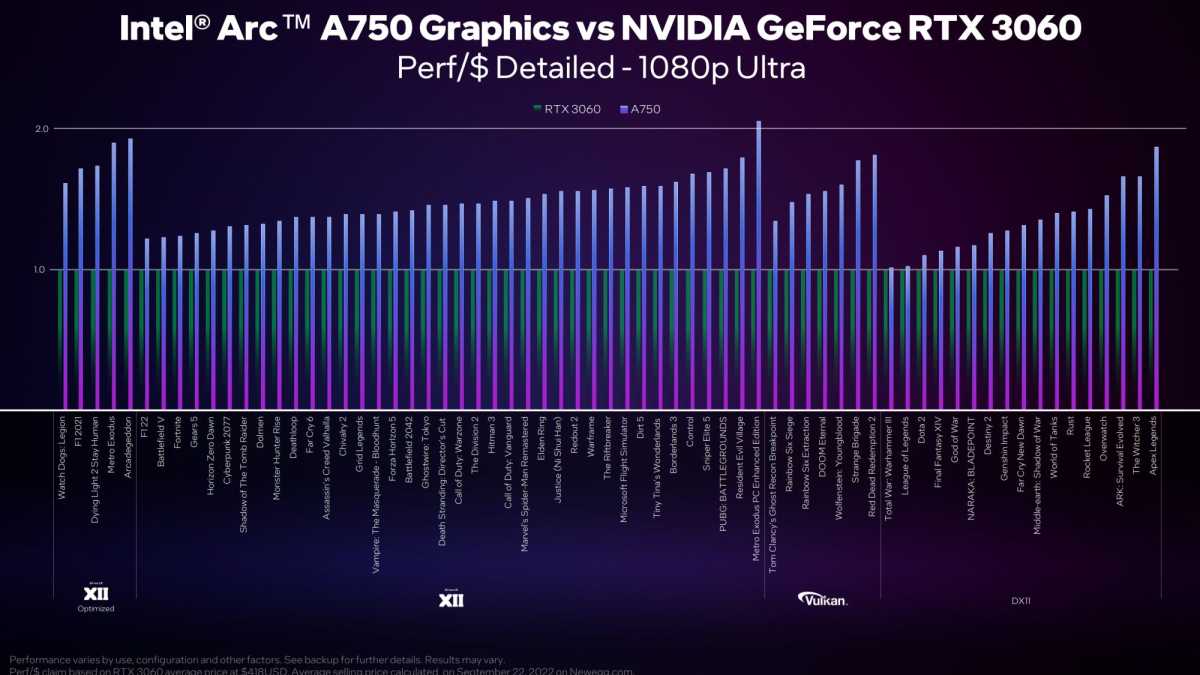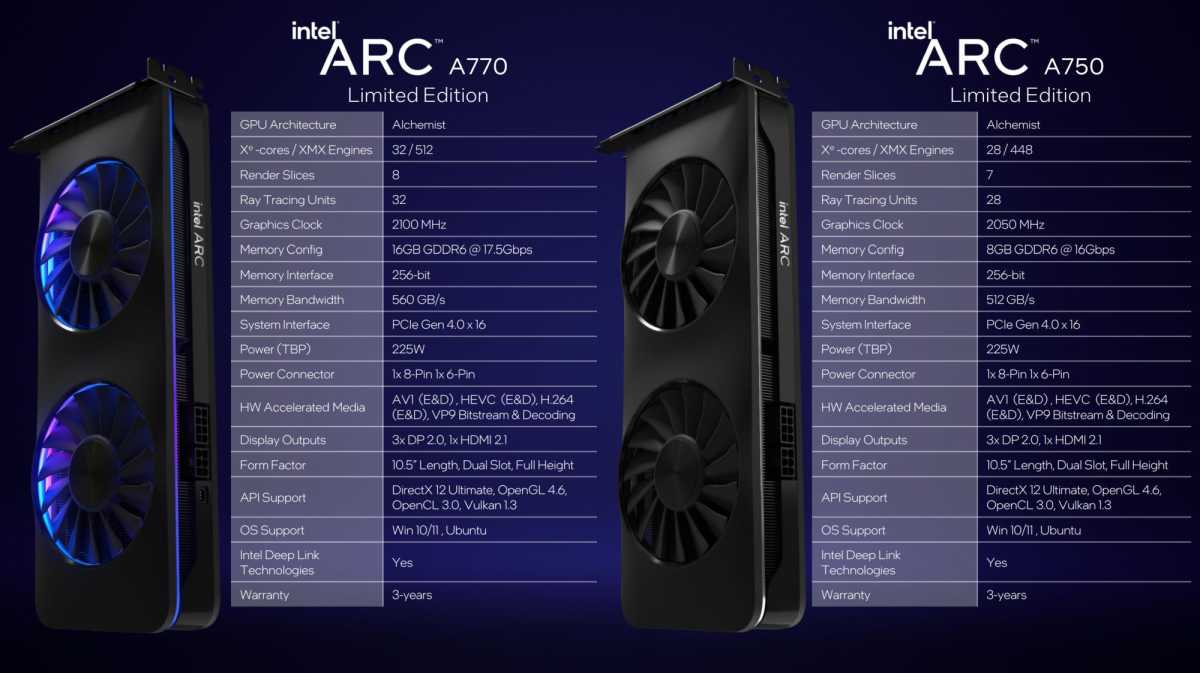
[ad_1]
After an eternity of delays and teases, Intel’s debut Arc desktop graphics cards are finally launching, with the flagship Arc A770 GPU releasing on October 12 for $329 (or $349 for a model with 16GB of GGDR6 memory instead of 8GB). Turns out that won’t be the only Arc GPU launching that day. The step-down Arc A750 will hit the streets at the same time, Intel revealed today, with a $289 price point intended to bring the pain to Nvidia’s GeForce RTX 3060.
The Arc A750 is a wee bit slower than the flagship A770, natch, but Intel claims its new contender still beats down Nvidia’s mainstream champion at both 1080p/Ultra and 1440p/High across a collection of over 50 different games. That’s despite sporting an MSRP a full $40 lower than the RTX 3060’s, and well below the roughly $400 to $420 you’d spend on most new-in-the-box RTX 3060s available currently at retailers.

Intel
Intel also released a graphic claiming that the A770 and A750 offer insanely more performance per dollar than the RTX 3060 (using a $418 average price for the RTX 3060 taken on September 22 from Newegg listings). It’s an “absolutely astonishing price that will reset the market,” Intel Fellow Tom Petersen told reporters in a briefing.

Intel
We’ll need to wait for independent reviews to verify that, of course, especially considering the various caveats tied to Intel Arc’s gaming performance. Intel’s Xe HPG architecture is optimized for modern graphics APIs like DirectX 12 and Vulkan. Those technologies have been building massive steam but most traditional games—especially outside the AAA space—are built using DirectX 11 and some esports games still use the downright ancient DX9. The benchmark charts Intel released showed the Arc A750 holding its own against the RTX 3060 in many titles, but falling slightly behind in many others.

Intel

Intel
That said, Intel promised to price Arc in line with its worst performers and if the charts above hold true, it certainly seems to be. (The two charts above show Intel’s claimed performance-per-dollar advantage for the Arc A750 over the RTX 3060 in each game, not raw frame rates.)
Arc’s memory controller was also built specifically to take advantage of the bigger memory chunks enabled by activating PCIe Resizable Bar (or Smart Access Memory, as it’s called on Ryzen systems). Intel systems back to the 9th-gen Core processors have been updated to support ReBAR, but you won’t want Arc if your system lacks it. “If you don’t have PCIe ReBAR, go get a 3060,” Petersen told reporters.
All that said, these are stunningly compelling prices for Intel’s debut Arc GPUs if the proof indeed winds up being in the pudding. Remember that gamers have suffered from debilitating graphics card prices for years, and the still-elevated cost of the RTX 3060 reflects that. Gamers just responded to the GeForce RTX 4090 and 4080’s wildly high price tags with a mixture of outrage and indifference. Just today, my colleague Michael Crider argued that Nvidia’s tone-deaf RTX 40-series pricing is a golden opportunity for AMD and Intel.

Intel
With Nvidia and AMD both on the cusp of new GPU generations after over a year of Arc delays, Intel’s graphics card debut is already kicking things off a bit on the back foot—but these launch prices for the Arc A770 and A750 prove that Intel still intends to come out swinging. We’ll see where the benchmarks wind up falling (especially compared to AMD’s Radeon RX 6600, which is going for a compelling $230 to $260 on the streets) but if the Arc A770 and A750 indeed winds up meeting and sometimes beating Nvidia’s RTX 3060 for so much less money, it could truly reset the mainstream GPU market that’s likely to be left alone by AMD and Nvidia for several months.
Arc is finally almost here. All that’s left to do is wait for benchmarks. Again, the Intel Arc A770 and A750 release on October 12—the very same day Nvidia’s $1,599 RTX 4090 stomps into stores.
[ad_2]
Source link